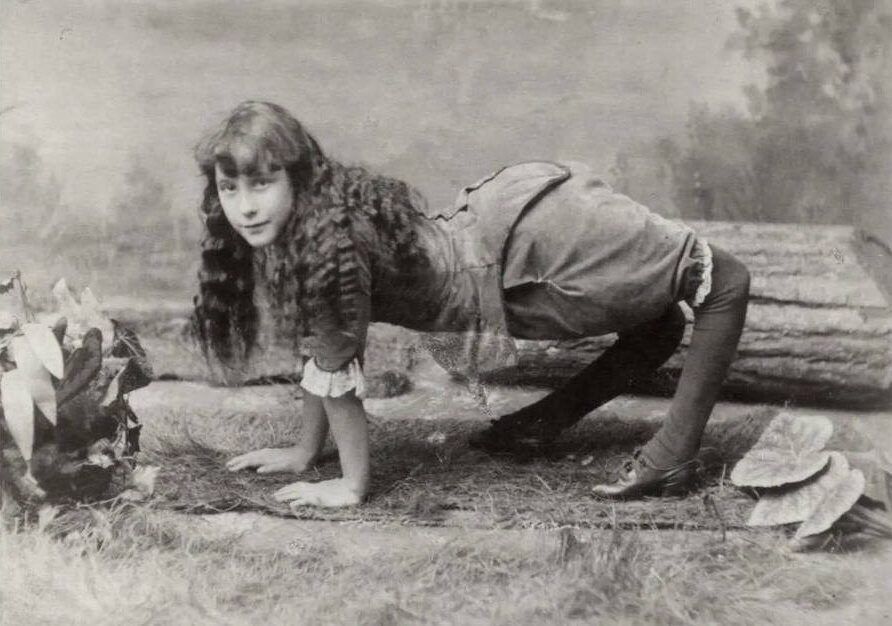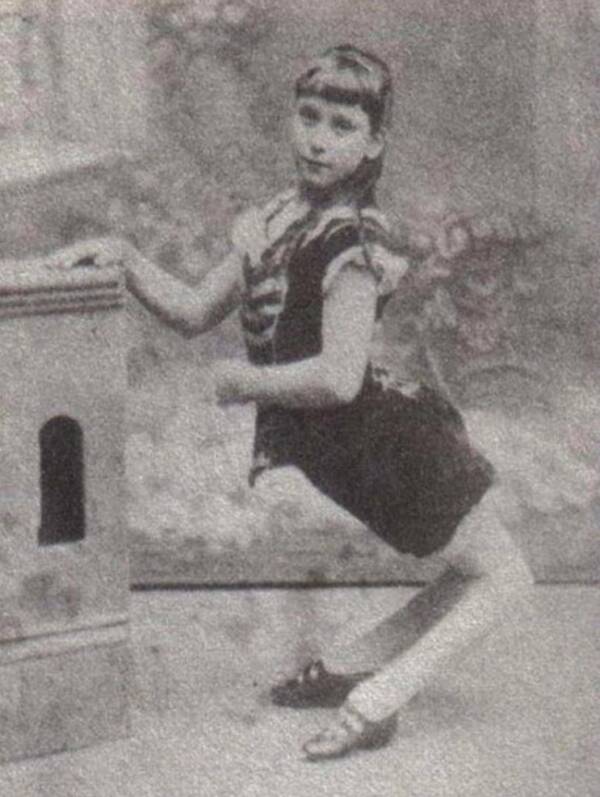Born with a rare condition that made her walk on all fours, Ella Harper found fame as the “Camel Girl” in front of traveling sideshow audiences from the time she was just 12.
Ella Harper was born shortly after the Civil War in Hendersonville, Tennessee, with a rare condition that made her knees bend backward — and made her into a spectacle.
She was most comfortable walking on all fours rather than on two legs and, because of America’s obscene fascination with sideshow “freaks,” that was enough to make her a circus attraction. Called the “Camel Girl,” she was gaped at by thousands.

Wikimedia CommonsElla Harper’s deformity led to her “Camel Girl” stage name.
“I am called the camel girl because my knees turn backward,” read the pitch card that would later be given to spectators. “I can walk best on my hands and feet as you see me in the picture. I have traveled considerably in the show business for the past four years.”
Here’s the story of the young woman behind the sideshow.
Why Was Ella Harper Called The ‘Camel Girl?’
Ella Harper was born on January 5, 1870. It was immediately apparent to doctors that she suffered from congenital genu recurvatum, which literally translates to “curved knee.”
Her father, William Harper, was a farmer who raised livestock while her mother Minerva Ann Childress tended to the children. Raised in Sumner County, none of her four siblings shared her disability. One of them died mere months after birth, while Ella Harper ultimately recognized her deformity as an opportunity to make a living.
American freak shows had only become commercially successful a few decades earlier, while European fairgrounds and taverns had already enjoyed sideshow performers as far back as the 1700s. Harper, however, was unlike anything spectators ever seen. And by 12 years old, she found work in the small-time “freak show” circuit — and soon graced circus stages from St. Louis to New Orleans.
Ambitious showman W.H. Harris was determined to feature the most diverse roster of “freaks” available and, after hearing of Harper, offered her a sizable salary to come under contract with him. His traveling Nickel Plate Circus had already included lion tamers and acrobats who performed atop galloping horses — and by 1886, it featured Harper as its star.

Public DomainHarper began performing at the young age of 12.
As a featured attraction in Harris’s Nickel Plate Circus, Ella Harper received a weekly salary of $200 — the equivalent of about $5,000 today. That allowed her to find a home while maintaining a lucrative career. However, her career also regularly humiliated her. Aside from the crude name of “Camel Girl,” Harper was also thrust onstage with an actual camel and paying viewers were invited to marvel at the similarities.
Describing what Harper did on stage as a performance is generous — and more indicative of the times than her talent. She simply served as a prop and point of comparison to the camel paraded around beside her. Nonetheless, audiences were amazed by what the press called “the most wonderful freak of nature since the creation of the world.”
While pitch cards accompanying tickets to her show touted her experience in the circus, they also stated her plan for the future. Harper was adamant when she said, “I intend to quit the show business and go to school and fit myself for another occupation.”
And ultimately, after a year’s worth of weekly $200 payments — she did.
Ella Harper’s Life After The Circus

Wikimedia CommonsElla Harper’s death certificate indicating that she was a housekeeper, and her cause of death was colon cancer.
“It is said by those who have seen her that there is nothing like her today on Earth, and that her counterpart never did exist,” one newspaper claimed in 1886, adding that Harper was “nothing more than a pleasant-faced young woman whose knees turned backward instead of forward.”
While her time as an exploited sideshow act had literally paid off for her, Ella Harper presumably hoped for more in life than merely being paraded around as a “freak.” And in 1887, after just one year as one of Harris’s “freaks,” she decided to pursue as much and round her résumé out with an actual education.
Not much is known about Ella Harper’s post-circus endeavors, but it is believed that Harper sought out education, and returned to her childhood home shortly after leaving the freak show circuit. And tragedy seemed to come with her. Sometime around 1890, her father died in a house fire, and Harper’s brother Willie passed about five years later.
Meanwhile, Harper also fell in love with a schoolteacher named Robert Savely. A photography shop bookkeeper, he and Harper tied the knot on June 28, 1905. A newlywed 35-year-old Ella Harper gave birth to a girl named Mabel Evans Savely on April 27 the following year.
The Savelys’ joy was, unfortunately, short-lived, as the infant died at only 6 months old on Oct. 1, 1906. The family ultimately relocated to Davidson County, where Harper and her husband made room for her mother. As if fated to mourn, the couple adopted a girl named Jewel in 1918 — only for her to die within three short months.
With cancer ravaging her colon, Ella Harper followed her young children into the grave on Dec. 19, 1921. Buried beside them, the woman once touted as “the most wonderful freak of nature” had come to shape her own destiny and come to live a full life. And yet, she’s still merely remembered as the “Camel Girl.”
After learning about Ella Harper, take a look at 44 vintage photos of sideshow “freaks.” Then, learn about six sad stories of the Ringling Brothers’ “Freak Show” acts.





